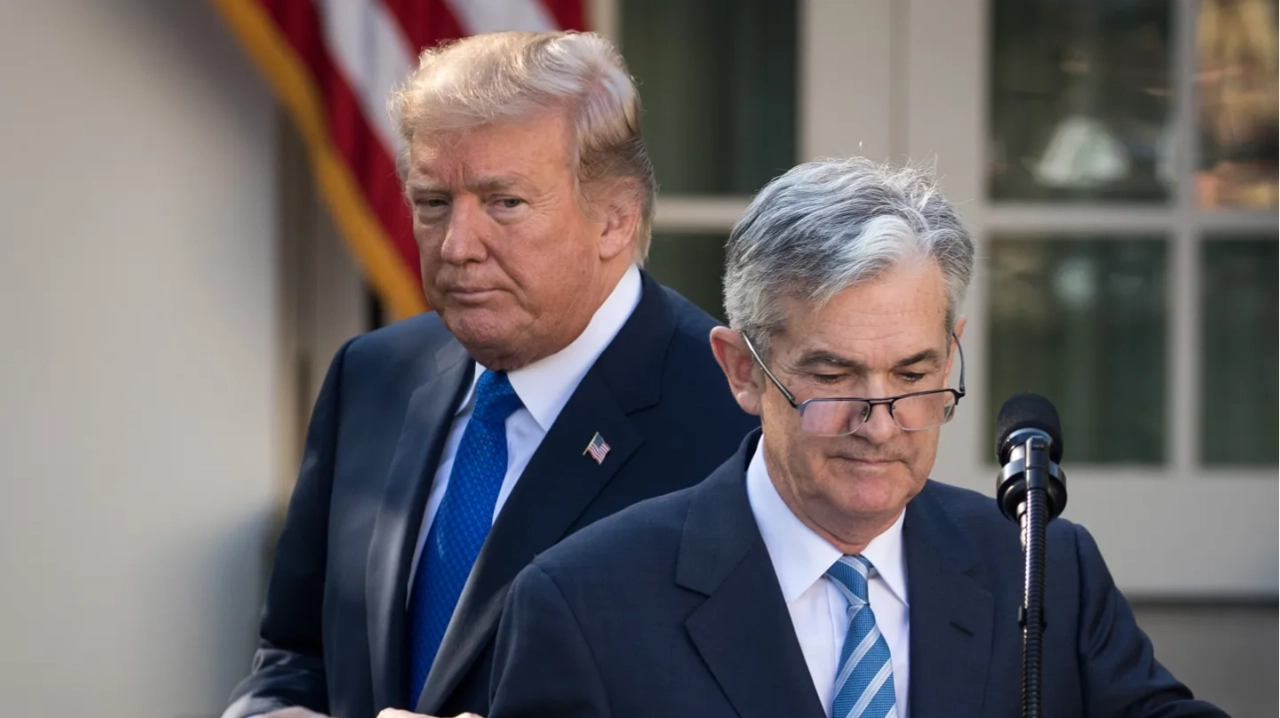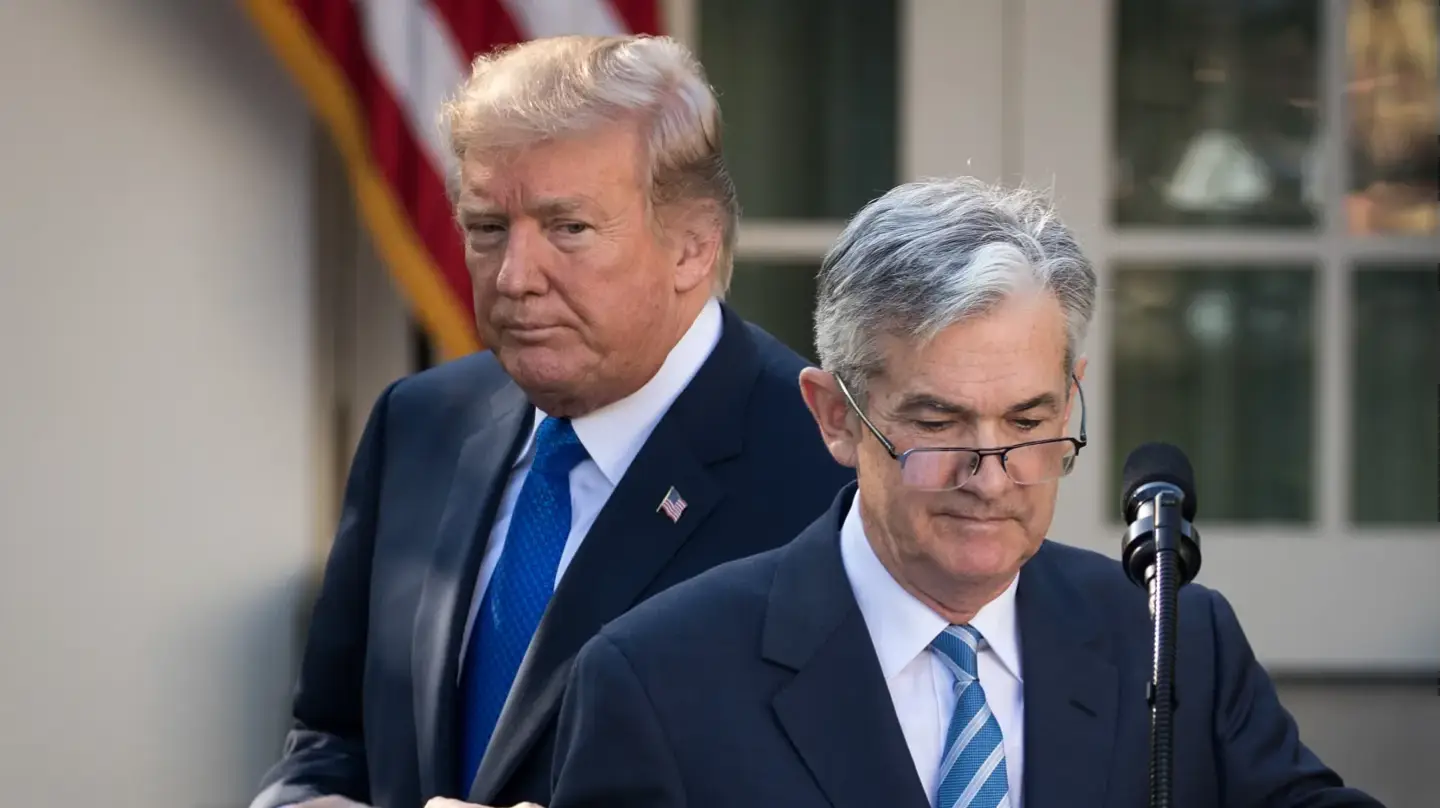
Great America Slowdown Soon? Fed Chair Jerome Powell Warns Of Looming Economic Crisis As Trump’s Tariffs Fuel Inflation | Image:
AP
Washington: Donald Trump’s tariffs are having an extreme impact on the US economy, raising concern among economists and policymakers. The average US tariff rate has skyrocketed to 17-18.6%, a level not seen since the Great Depression, with big consequences for consumers, businesses, and the United States economy. Jerome Powell, the Chair of the Federal Reserve, stated on Friday that the central bank is navigating a tricky and challenging situation, with a slowdown in hiring and rising prices driven by tariffs. The situation is exerting pressure on the Fed’s dual mandate, which is to achieve maximum employment and maintain price stability.
According to Jerome Powell, the effects of these tariffs on consumer prices are becoming clear and are expected to grow. The Fed is being cautious but might adjust interest rates given the shifting risks. A weak jobs report has added to the uncertainty, prompting the Fed to consider its next move carefully.
Fed Anticipated Price Increases To Build Momentum In Coming Days
Powell underlined the central bank’s challenging situation in his speech at the annual Jackson Hole gathering, caught between a hiring slowdown and tariff-driven price increases. His remarks ripped through the financial markets, with investors predicting a high likelihood of an interest rate cut in September. Powell noted that the impact of tariffs on consumer prices has become increasingly evident. He also asserted that the Fed anticipates these price increases to build momentum over the forthcoming months.
However, despite this, Powell observed that the balance of risks seems to be shifting in response to the recent deceleration in hiring, which was outlined by a lacklustre jobs report earlier in the year. The report included downward revisions to job gains over recent months. The shift is driven by the need to balance the dual mandate’s competing goals. The Fed’s framework, Powell emphasised, calls for balancing both sides of the dual mandate when goals are in tension.
While Powell stressed that the Fed will proceed with caution, he also suggested that the evolving risk situation may necessitate a reevaluation of the policy stance. Specifically, he mentioned that the shifting balance of risks could warrant adjustments to interest rates.
Looming Economic Crisis On The United States
The experts suggested that the United States economy is facing a possible slowdown, warning of a recession on the horizon. According to JP Morgan Research, the probability of a US and global recession occurring in 2025 has been estimated at 40%. The assessment comes as trade tensions between the US and China ease, reducing the risk of a recession this year.
Several factors are contributing to the expected slowdown, including tariffs, which have led to increased prices, reduced purchasing power, and weaker GDP growth. The effective ex-ante tariff rate is estimated to be around 13.4%, akin to a $430 billion tax hike on US households and businesses. The second factor is inflation, which is expected to remain high, with Apollo Global Management forecasting inflation to be around 3% by the end of 2025. This is well above the company’s previous estimate of 2.4% prior to Trump’s tariffs announcement. The third factor is unemployment, as the labour market is expected to slow down, with unemployment projected to increase from 4.2% currently to 4.4% in 2025 and further to 5% or higher in 2026. The last factor is the GDP growth, which is expected to slow sharply, with some experts predicting a growth rate of just 1.2% this year, less than half the record 3.1% expansion in the third quarter of 2024.
The market’s reaction to Powell’s speech was swift, with futures markets indicating a 91% chance of a quarter-point interest rate cut at the Fed’s next meeting. Stocks rallied, with the Dow Jones Industrial Average soaring nearly 800 points and the S&P 500 jumping 1.4%. The tech-heavy Nasdaq climbed 1.7%, reflecting investor optimism about a possible rate cut.
How Trump Factor Attributing To Slowdown
The Fed’s decision-making process has been further complicated by pressure from the Trump administration, which has been urging the central bank to lower interest rates. Trump recently called for Fed Governor Lisa Cook to resign, leading to a rebuke from Cook herself, who stated she has no intention of being bullied to step down. The political clash outlined the delicate balance the Fed must maintain between its independence and external pressures.
The tariffs have led to higher costs for consumers, disrupted supply chains, and damaged US competitiveness. Despite Trump’s claims that tariffs will bring in “trillions of dollars” in revenues, the reality is that the US economy is starting to suffer. Higher inflation, a weaker dollar, reduced purchasing power, lower demand, and weaker GDP growth are all potential consequences of Trump’s tariff policy.
Globally, the impact of Trump’s tariffs is being felt, with allies rebelling against the measures and emerging economies asserting their autonomy. The International Monetary Fund (IMF) estimates that a universal 10% rise in US tariffs, accompanied by retaliation, could reduce US GDP by 1% and global GDP by roughly 0.5% through 2026.
Interest Rate Conundrum, Experts’ Warning
The federal funds rate currently stands between 4.25% and 4.5%, a level that has been maintained for eight months. Powell reiterated the central bank’s focus on whether tariff-driven price hikes will create an ongoing inflation problem. The prospect of persistent inflation remains unclear, but the Fed must consider this possibility when weighing interest rate decisions.
The Federal Reserve Chair has emphasised the importance of the Fed’s independence, allowing it to make challenging decisions based on data and economic outlook rather than political factors. Independence appears to be crucial as the Fed is undergoing a complicated economic condition to make decisions that will shape the country’s economic future.
Top economists, including Torsten Slok, Apollo Global Management chief economist, warned that the US economy faces stagflation due to Trump’s tariffs, halving GDP growth to 1.2% this year. Slok also noted that the possibility of a recession over the next 12 months is at 25%.
The Federal Reserve is expected to hold policy rates steady over the medium term, with the next rate cut not likely until December. JP Morgan Research expected three sequential cuts thereafter, reaching a policy rate of 3.25–3.5% by the second quarter of 2026. As the US economy passes through a tough, complex terrain, it remains to be seen whether the slowdown will morph into a full-blown recession.
As the US economy goes through a rough terrain, the Federal Reserve faces a challenging situation, caught between a hiring slowdown and tariff-driven price increases. The consequences of Trump’s tariffs will likely be vast with with possible long-term damage to America’s global competitiveness and credibility as a trading partner.
